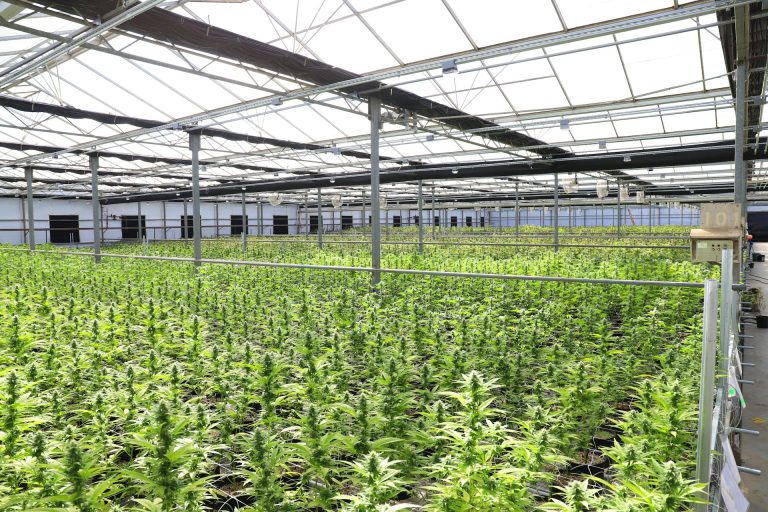A well-organized and optimized warehouse can significantly impact a company’s bottom line, customer satisfaction, and overall business success. One of the keys to optimization is keeping a close eye on various metrics that provide insights into the performance of your warehouse operations.
In this article, we’ll explore 14 essential metrics that every warehouse manager or business owner should watch for to ensure a smoothly functioning warehouse.
Inventory Metrics
Inventory Turnover Rate
Inventory turnover is a fundamental metric that measures how quickly your warehouse cycles through its stock. It is calculated by dividing the cost of goods sold (COGS) by the average inventory value during a specific period.
A high turnover rate indicates that you are efficiently using your warehouse space and capital. A low turnover rate may suggest that items are sitting on your shelves for extended periods, tying up capital and storage space.
Stockout Rate
Stockouts occur when your warehouse runs out of a particular product, which can lead to disappointed customers, lost sales, and increased operational costs to expedite shipments.
Monitoring stockout rates and optimizing reorder points can help mitigate the risk of stockouts. Implementing demand forecasting and safety stock policies can further ensure product availability.
Order Fulfillment Metrics
Order Accuracy Rate
Order accuracy is a crucial metric that gauges how often your warehouse ships the correct items in the right quantities. It’s calculated by dividing the number of orders shipped without errors by the total number of orders.
Improving order accuracy is essential for customer satisfaction and reducing returns. Implementing barcode scanning systems and double-checking orders can significantly enhance accuracy.
Order Lead Time
Every customer appreciates fast order fulfillment, and order lead time measures the time it takes from receiving an order to shipping it. To shorten lead times, streamline your warehouse processes with optimized Warehouse Tools to ensure efficient picking and packing, and prioritize the fastest shipping methods.
Warehouse Utilization Metrics
Space Efficiency
Effective use of warehouse space is vital to control costs. Monitor space utilization by assessing the cubic volume of your products and their placement.
Use pallet racking systems, mezzanines, and bin systems to maximize vertical space and make the most of your warehouse’s square footage. Proper signage and clear labels will also expedite the time spent locating and picking items.
Rack Utilization Rate
Racks are essential for organizing inventory. Rack utilization measures how efficiently your racks are used in storing items, and can quickly be improved by organizing products logically on racks, optimizing storage capacity, and regularly reviewing and to maintain efficiency.
ECommerce Integration Metrics
Order Management Productivity
An online presence provides your business with expanded sales opportunities, but often places an additional time burden to manage the many orders and carts. These problems are often simplified by incorporating a Multi-Cart order hub to manage all incoming orders into a single location.
Item Count Accuracy
Increased online orders are a good problem to have, but item count accuracy often slips as customer demand rises. Fortunately, the same solution to order management found in capable Multi-Cart solutions will also connect to inventory counts in real time, which keeps item levels accurate.
Labor Productivity Metrics
Picking and Packing Productivity
Efficient picking and packing directly affect order fulfillment. Measure productivity in terms of orders picked and packed per hour. Use technology like Barcode Systems, train employees effectively, and maintain organized warehouse layouts to boost productivity.
Employee Turnover Rate
High turnover rates can disrupt your warehouse operations, causing inefficiencies and higher training costs. This metric measures the percentage of employees leaving within a specific period, such as by quarter or annually.
This churn rate can be reduced through offering competitive wages, opportunities for growth, and a safe working environment to reduce turnover.
Transportation Metrics
Transportation Cost Per Unit
Transportation is a significant cost for most warehouses, and can be understood at a simplified level by calculating the cost per unit transported to manage expenses.
To further reduce shipping spend, consolidate shipments, use efficient routes, and negotiate favorable terms with carriers to lower transportation costs.
On-Time Delivery Rate
Customers expect their orders to arrive on time, so measure how often you meet delivery deadlines and as needed, improve communication with carriers, track deliveries, and optimize your shipping schedules to achieve higher on-time delivery rates.
Technology and Training Metrics
Warehouse Management System (WMS) Utilization
A Warehouse Management System (WMS) is a critical tool for managing inventory and orders. Measure its utilization and effectiveness. Ensure your WMS is fully integrated into your warehouse processes, from receiving to shipping, to maximize its benefits.
Training Rate
At any given time your employees operate in the warehouse at varying levels of proficiency, but the single fastest way to improve their understanding of processes and technology is continual training.
In order to maintain and even elevate employee capabilities, use the listed metrics above for indicators of training need, and consider third party inventory experts to create the customized training your team needs.
Frequently Asked Questions (FAQs)
What is the primary goal of monitoring warehouse metrics?
The primary goal is to assess and improve warehouse efficiency, reduce costs, enhance customer satisfaction, and maintain a competitive edge.
How can I calculate inventory turnover rate?
To calculate inventory turnover rate, divide the cost of goods sold (COGS) by the average inventory value during a specific period.
What are some common causes of stockouts?
Common causes include inaccurate demand forecasting, inefficient inventory management, and delayed supplier deliveries.
Why is order accuracy crucial in warehousing?
Order accuracy is crucial for customer satisfaction, reducing returns, and maintaining a positive brand image.
How can I reduce order lead time?
You can reduce lead time by streamlining warehouse processes, optimizing picking and packing, and prioritizing fast shipping methods.
What factors affect space utilization efficiency?
Factors include product dimensions, shelf layouts, storage systems, and inventory management practices.
How do I improve employee turnover rate in my warehouse?
Improve wages, offer growth opportunities, maintain a safe work environment, and provide employee training and support.
What are the benefits of using a Warehouse Management System (WMS)?
A WMS enhances inventory accuracy, order efficiency, and warehouse organization, leading to reduced costs and improved customer satisfaction.
How can I measure and reduce my warehouse’s carbon footprint?
Measure energy consumption, emissions, and resource usage to understand your footprint. Then, implement sustainable practices and technologies to reduce it.
What are some essential safety measures for warehouse operations?
Essential safety measures include security systems, access controls, safety training, personal protective equipment, and a culture of safety awareness.
Takeaway
Monitoring these 14 crucial metrics is the key to maintaining warehouse efficiency, cutting costs, and providing exceptional service to your customers. By implementing these strategies and continually monitoring these metrics, you can ensure that your warehouse operates at its peak potential, contributing to the success of your business in an increasingly competitive marketplace



